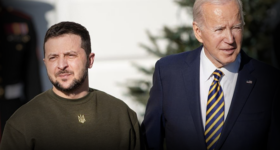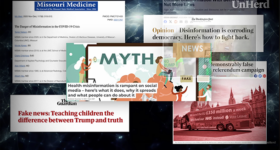Shawn Helton
21st Century Wire
The Pentagon along with the Minerva Research Initiative, appears to have resuscitated and partially reconstituted a 1960’s Cold War-era social science program used to detect, infiltrate and steer political protest…
The controversial program called Project Camelot had been operational nearly a decade into the Vietnam War, as the Special Operations Research Office (SORO) located at American University had received millions in funding from the US Army to conduct a six country study on civil unrest.
The current social science program directed by Minerva and the Department of Defense (DoD), appears to have also partnered with some of the most well-known universities in the United States by studying the behavior of peaceful activism and how political ideology shapes protest movements in the world at large.
Under both the Bush and Obama administrations, the Minerva Research Initiative has been conducting partly clandestine studies with the sponsorship of the Department of Defense and its university partners since 2010.
The big question should be: what is the endgame of this expensive and all-encompassing project?
This new program has prompted a rebirth of the militarization of social science and in the process has undoubtedly opened a floodgate of ethical concerns. The creation of this partnership was born out of a speech by former Secretary of Defense as well as past Director of the CIA, Robert Gates. In April of 2008, Gates delivered a speech at the Association of American Universities, there he provided a vague outline for research that worked in conjunction with academia and other Pentagon affiliated agencies such as the DoD :
“What we are considering is based to some degree on the success we had in the Cold War. During that period, we built up the Department of Defense’s – and the nation’s – intellectual capital with new research centers such as RAND and new mechanisms like, as I mentioned, the National Defense Education Act. With the Minerva initiative, we envision a consortia of universities that will promote research in specific areas. These consortia could also be repositories of open-source documentary archives. The Department of Defense, perhaps in conjunction with other government agencies, could provide the funding for these projects.”
Global policy think-tanks like the RAND corporation and laws such as the National Defense Education Act (NDEA), are hardly anything new as RAND was founded in 1948 and the NDEA was put into law in 1958. The RAND corporation has been linked to many risky and paranoid-driven creations during the height of the Cold War, with strategy based analysis born out of “suspicion and self-interest” which was personified in their vision of Game Theory, which was used to predict a possible nuclear conflict by gauging a series of mathematical models on Soviet behavior. One of RAND corporation’s most well-known Mathematician’s John Nash, applied this theory ruthlessly, suggesting it that could be used for other dark purposes, as those engaged in the theory could also betray one another if necessary, resulting in subterfuge. RAND had developed a network of so-called field experts, such as political scientists, social psychologists and anthropologists to oversee many of its most pressing projects.
The National Defense Education Act was passed with a distrustful affidavit that stated that all beneficiaries of the law disclaim a belief to overthrow the US government. That portion of the law was later repealed by President Kennedy in 1962.
The US federal government has long since been wary of its perception in the eyes of the public and has used historical happenings such as the Cold War or the War on Terror as devices to quell any criticism of foreign or domestic policy. One has gotten the impression over the last half century or more, that the West must engage in a perpetual war with an ever-changing enemy, at all costs to restore humanity – this is the ultimate ploy to convince the next wave of youthful statists.

IMAGE: ‘Draped in Black’ – Robert Gates Secretary of Defense from 2006-2011 and former Director and Deputy Director of the CIA during much of the 80’s. Gates has taken heavy criticism for the role he played under William Casey’s direction while working as Deputy Director at the CIA. According to former CIA analyst Melvin Goodman, Gates had been a part of one the most corrupt times in the agency’s history serving under Casey. It was also said that Gates had provided misleading information during the highly publicized Iran-Contra operations and oversaw the channeling of weapons as well as other aid to Islamic brigades during the blowback-ridden Soviet /Afghan conflict. (Photo: newslanc.com)
Civil unrest, the military & Project Camelot
In a recent article entitled, “Pentagon preparing for mass civil breakdown,” by Nafeez Ahmed, at the Guardian, we learned that a new “research programme is funding universities to model the dynamics, risks and tipping points for large-scale civil unrest across the world, under the supervision of various US military agencies.” The program was brought to fruition during the height of the banking crisis in 2008, as Ahmed points out, suggesting it was already in the works for some time – and time was of the essence. This latest social science study could be as big or bigger then the Snowden documents on NSA bulk collection, not only are Americans being tracked but their behavior is being categorized, labeled and scrutinized, prompting those who value sovereignty to question the ethics of such a program. The Guardian article outlined the type of language used to describe civil movements promoting political change, ironically the uprising in Egypt was engineered by US NGO’s working in concert with the State Department :
“Among the projects awarded for the period 2014-2017 is a Cornell University-led study managed by the US Air Force Office of Scientific Research which aims to develop an empirical model “of the dynamics of social movement mobilisation and contagions.” The project will determine “the critical mass (tipping point)” of social contagians by studying their “digital traces” in the cases of “the 2011 Egyptian revolution, the 2011 Russian Duma elections, the 2012 Nigerian fuel subsidy crisis and the 2013 Gazi park protests in Turkey.”
If you consider the historical context of the American Revolution, why would mass political protests in the United States be regarded as a social contagion?
Is this program setup to use college institutions as a laboratory to quell future dissent through some sort of re-education or will the subjects themselves become future targets?

IMAGE: ‘Sword in the Stone’ – The US Army derived the name for Project Camelot from this fantasy based book. The story’s central theme is about power and justice, as Merlin teaches Arthur about the worst parts of the ruling class.
(Photo credit: goodreads.com)
In 1964, Project Camelot had been born out of the “Office of the Chief of Research and Development and presented to the Office of the Director of Defense Research and Engineering who thereafter passed it on to the Army Research and Development Office who turned to the Special Operations and Research Office (SORO) at American University of Washington DC.” The project itself is said to have received 6 million in funding from the US Army.
The Special Operations and Research Office had sent a consultant and anthropologist named Hugo Nutini to approach Chilean social scientists and other anthropologists about being a part of the military social science program called Project Camelot. The true nature of the project had been brought to question by Norwegian sociologist Johan Galtung, after Galtung had received a memorandum inviting him to participate in a discussion on the project in 1966, even though the actual meeting was to take place in the summer of 1965. Galtung then gave the letter to Claudio Bunster a Chilean theoretical physicist, who immediately expressed doubt over the projects motivations and its connection to the US military.
A letter to the editor in July of 1965 was published in the Latin American Review of Sociology outlining the immoral context with which to view Project Camelot, as it appeared to be a, “grave violation of the most elementary rules of professional ethics which must govern relations between scientists.”
Bunster’s comments to colleagues on the Camelot Affair as it was later called, sent a shock-wave through Chile, as they were to be the test subject for the infamous project, “the study was financed by the armed forces of a foreign power,” continuing he described how the plan could have been exploited, “formulating foreign policy of that foreign power.” Following the media firestorm and outspoken critics like Bunster and Galtung the project was disbanded and put to rest.
The main purpose of Project Camelot was stated by the army as such:
“Success in such tasks as equipping and training indigenous forces for an internal security mission, civic action, psychological warfare, or other counterinsurgency action depends on a thorough understanding of the indigenous social structure, upon the accuracy with which changes within the indigenous culture, particularly violent changes, are anticipated, and the effects of various courses of action available to the military and other agencies of government upon the indigenous process of change.”
Its important to note that all of the researchers that had been a part of Project Camelot were all members of some of America’s most prestigious universities such as Chicago, Columbia, Harvard, Pennsylvania and Yale – does this sound familiar?
By the end of the 60’s, many scholars and activists had exposed the Pentagon’s social science research and other black operations like the Phoenix Program, which was a counterinsurgency project run by the CIA during Vietnam. The Program focused on the development of controversial counter-terrorism techniques and through its application became the quintessential false flag, employing terror tactics to destabilize the North Vietnamese leadership claiming to eradicate the Vietcong through the use of psyops, extortion, the release of criminals and random targeting of civilians to achieve its aims. Many people believe that this template for destabilization has been used in Afganistan, Iraq, Libya, Syria and more recently South Sudan.
In 2010, it was revealed in an Associated Press article, that US military had been looking for a way to re-brand its psychological operations, due its ‘ominous’ nature. The name change extended to all facets of the military and was directed by policy makers that worked under previous Defense Secretary Robert Gates. The article then went on to describe psyops as persuading the enemy through radio, loudspeakers and government sponsored leaflets:
“The Army has dropped the Vietnam-era name “psychological operations” for its branch in charge of trying to change minds behind enemy lines, acknowledging the term can sound ominous.
The Defense Department picked a more neutral moniker: “Military Information Support Operations,” or MISO.”
What was behind the psychological operation name change, why would they change it now?
When looking at how secretive the Minerva Initiative has been since Gates helped conjure the concept and given his sordid background – we have to consider this military operations name change as being significant.

IMAGE: ‘Rising from the Ashes’ – The official Phoenix Program patch from the Vietnam era depicting the mythological bird (Photo usmilitariaforum.com)
Minerva, NGO’s & threats of terror
The Minerva Initiative along with the DoD funded a project with US Naval Postgraduate School, that connected peaceful activists and non-violent political protesters to that of terrorism in a document entitled,’Who Does Not Become a Terrorist, and Why?,‘ it gives a brief breakdown of individuals who might have a “background of those who decided to engage in terrorism,” but have, “chosen a path of non-violence.” The document appears to have blended violent militancy with that of someone or some persons who may oppose a particular political ideology, which would only broaden the scope of people characterized in this manner.
This should be a major ethical concern when thinking about historical accounts of damaging social science programs, as it raises many more questions in terms of how this research will be used in the future:
“In every context we find many individuals who share the demographic, family, cultural, and/or socioeconomical background of those who decided to engage in terrorism, and yet refrained themselves from taking up armed militancy, even though they were sympathetic to the end goals of armed groups. The field of terrorism studies has not, until recently, attempted to look at this control group. This project is not about terrorists, but about supporters of political violence. Our goal is twofold. First, we propose to study supporters of armed militancy, in order to describe the panoply of activities they are willing to undertake short of violence, and the determinants of those actions. At the same time, we aim to contribute to theory building in the field of individual radicalization by looking at a control group that has, so far, never been studied.”
Here you catch an inside glimpse into how non-violent dissidents or political activists are categorized as “supporters of political violence,” as the document confidently claims that based on your family history and socioeconomic standing you could be considered “sympathetic to the end goals of armed groups.”
Why would the US military be focusing on intellectuals in American universities in this new social science control group – How is it possible that they would have any connection to the socioeconomic background of those who are considered radical terrorists?
The project is also stated as having 14 case studies with 140 life histories being evaluated, involving lengthy interviews with activists, militants, parties and NGO’s. According to Ahmed’s article for the Guardian, he attempted to contact the principal investigator on the project, Professor Maria Rasmussen of the US Naval Postgraduate School – but received no answer.
The Minerva program had also been contacted by the Guardian and issued a canned response from the DoD press office on the matter, one excerpt stated:
“Minerva helps fund basic social science research that helps increase the Department of Defense’s understanding of what causes instability and insecurity around the world.”
There seems to be a historical precedence for targeting thinkers of society when we look back to WW2, as Nazi leaders had deliberately ordered deaths of intellectuals, after being deemed a threat during Hitler’s reign. The humanitarian crisis for scholars and intellectuals during the Nazi-era was then surpassed by that of Mao Zedong’s dark rule during China’s cultural revolution, as he specifically executed intellectuals, viewing them to be one of his main enemies and in doing so, slaughtered some 46,000 scholars. All told, Mao is said to have taken the lives of 65 million or more under his oppressive socialist regime, more then Hitler and Stalin combined.
In today’s society of hyper surveillance and NSA bulk collection of data, we should be very cautious about these kinds of vague research programs that can impact the United States domestically and its relationships throughout the world through its applied science.
We should also remember that military sponsored research has created an atmosphere of distrust as many of its applied programs have been cancelled or exposed or the last half-century as being detrimental…
READ MORE PENTAGON NEWS AT: 21st Century Wire Pentagon Files
















